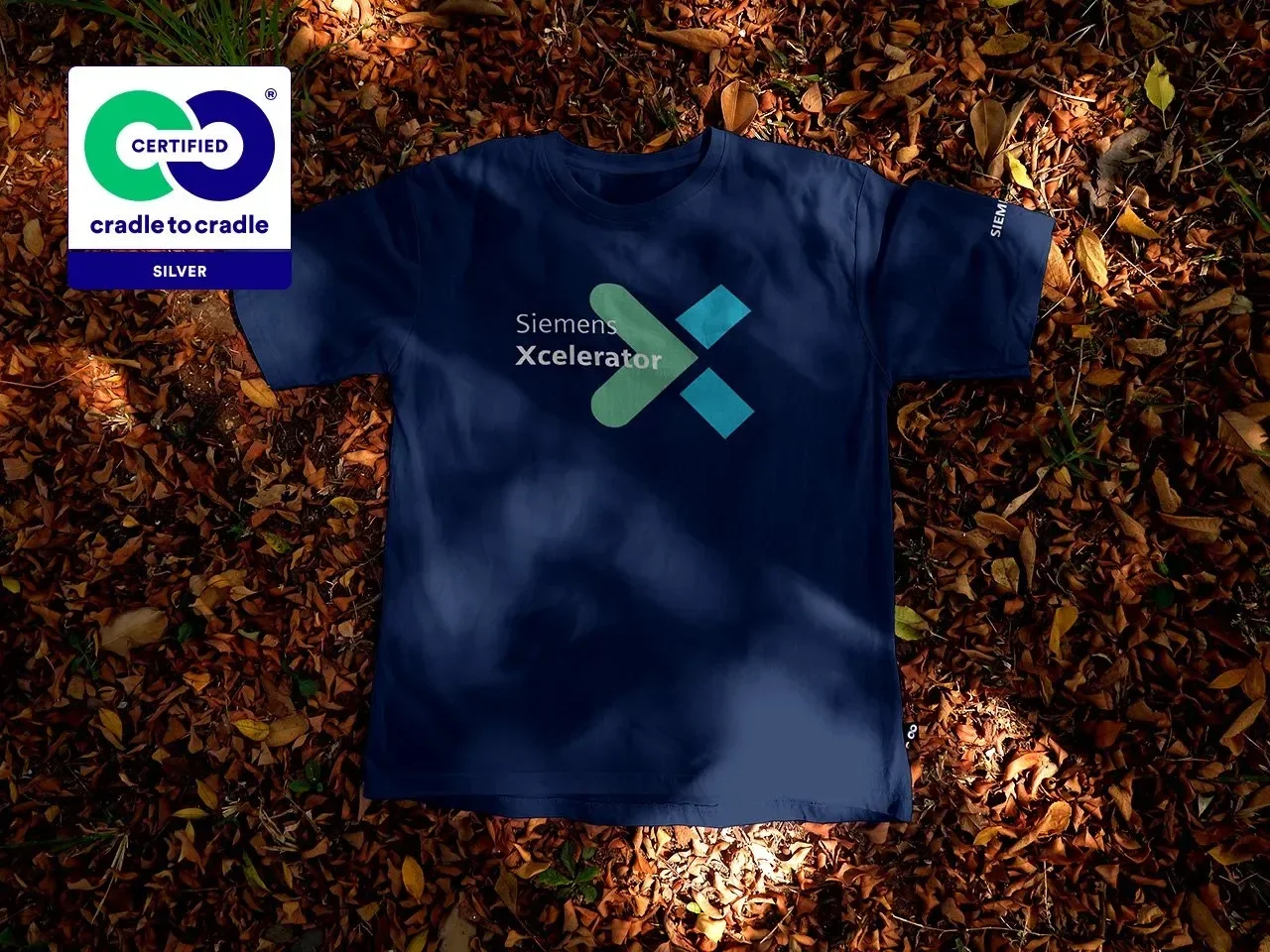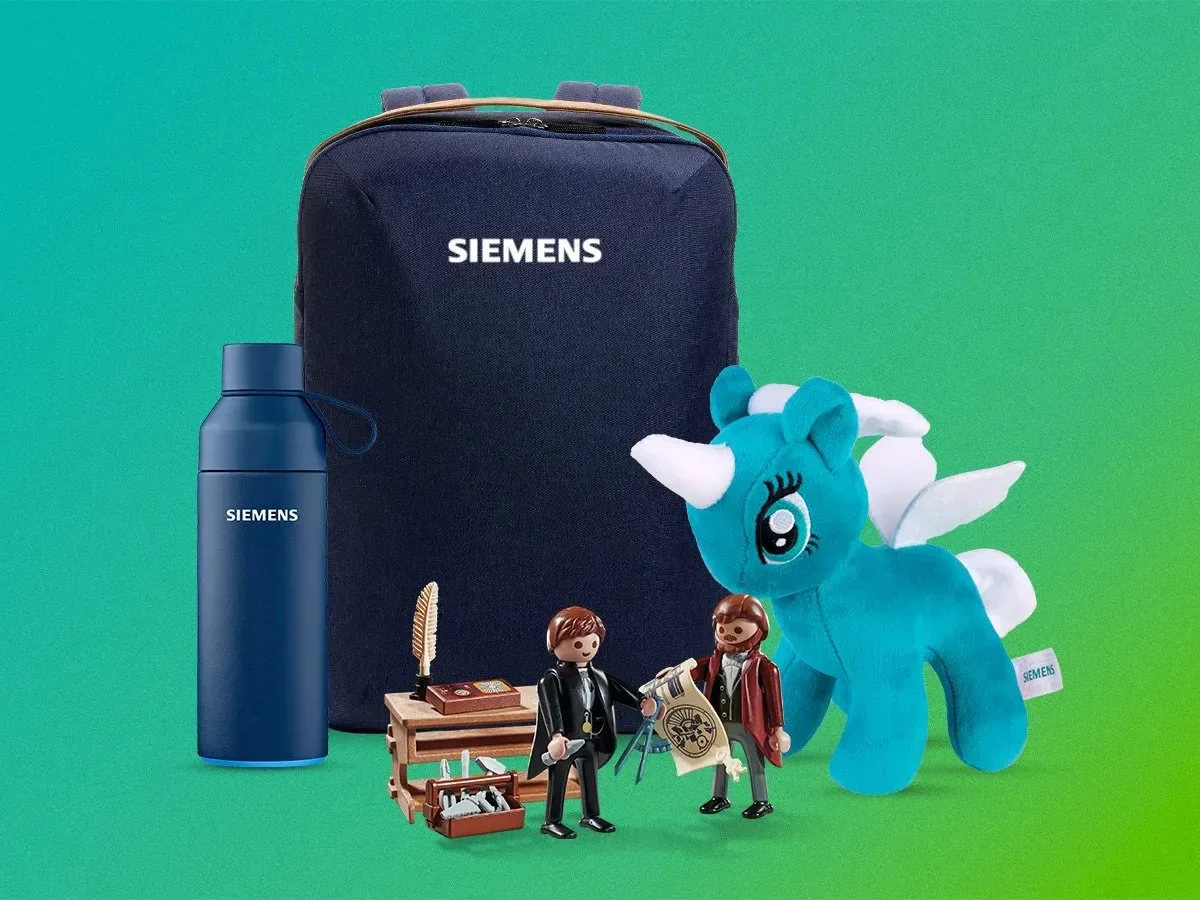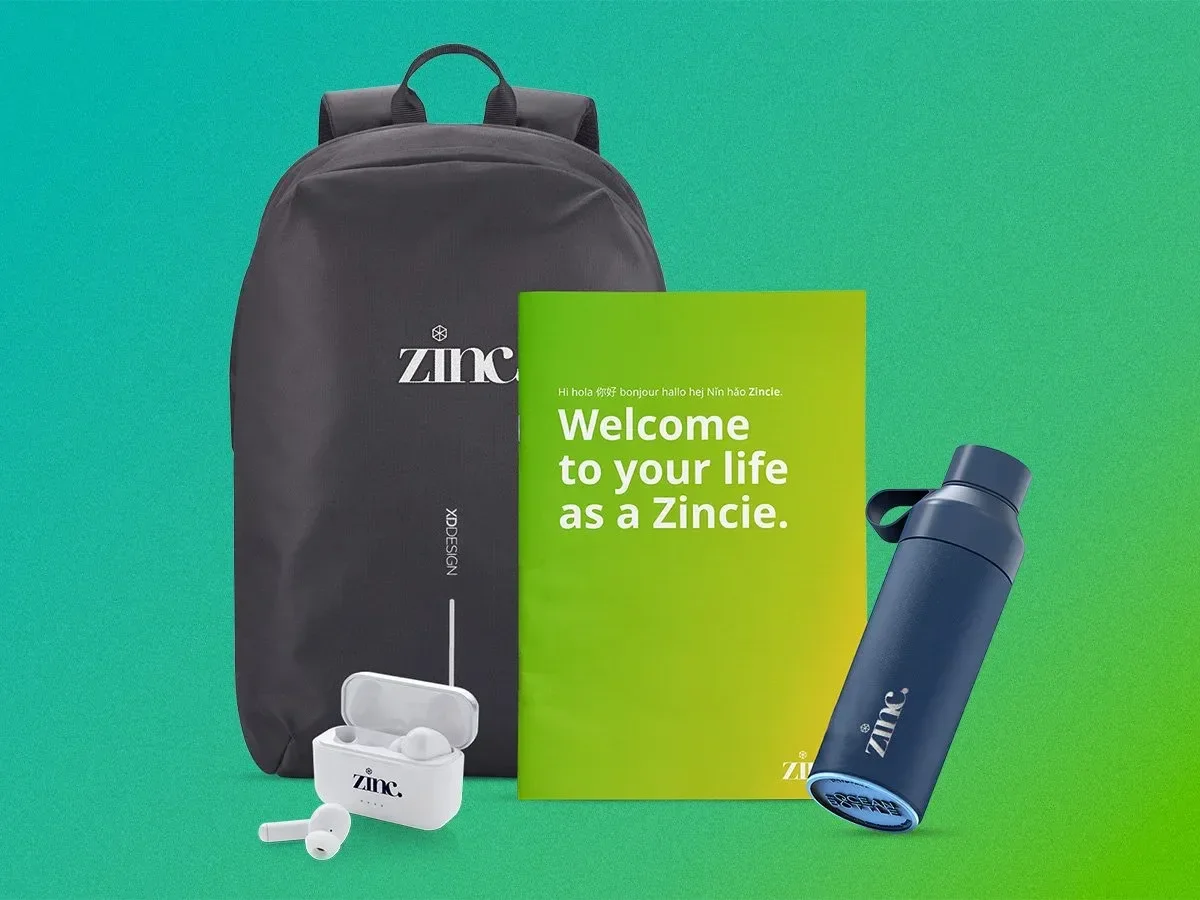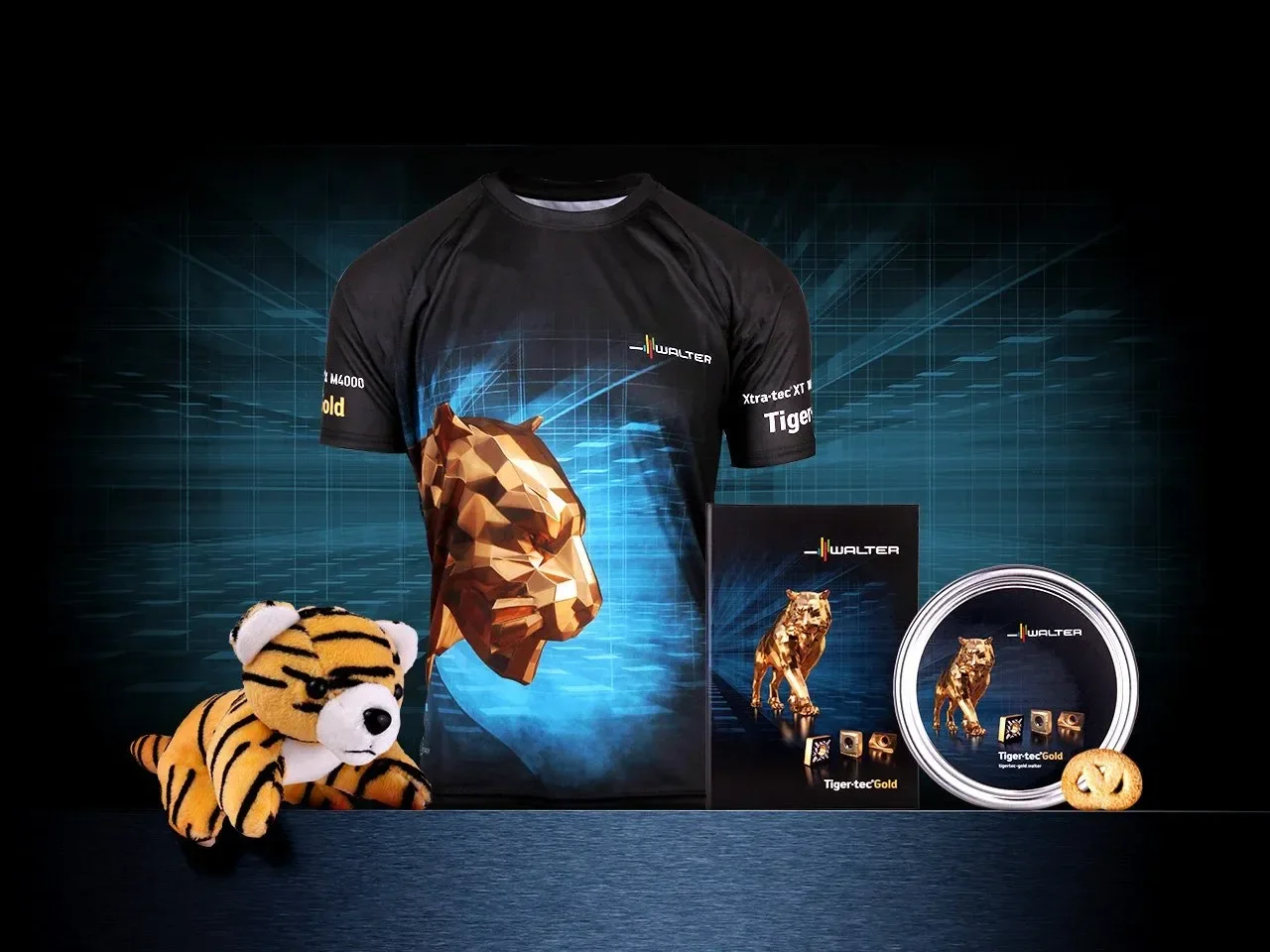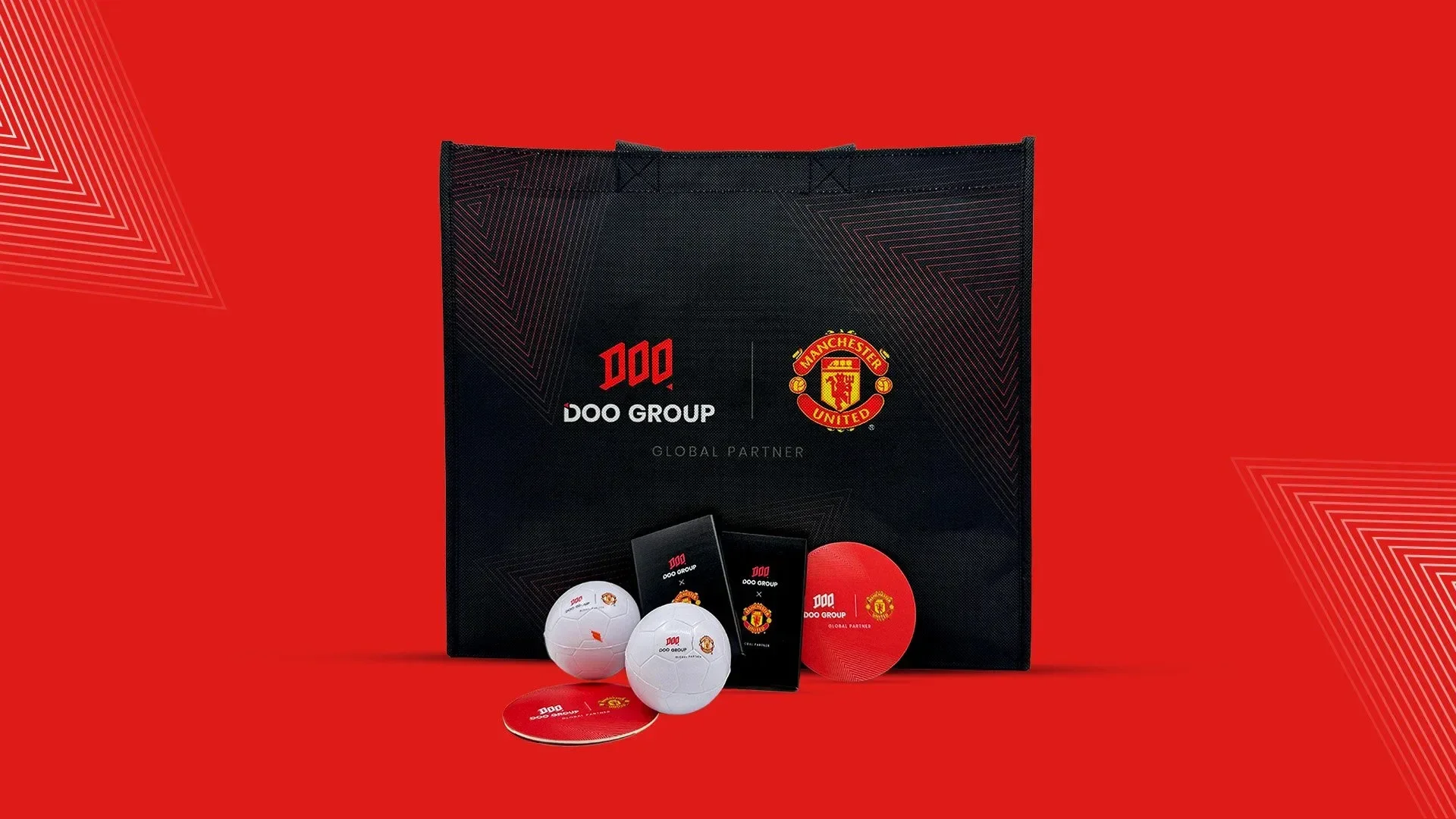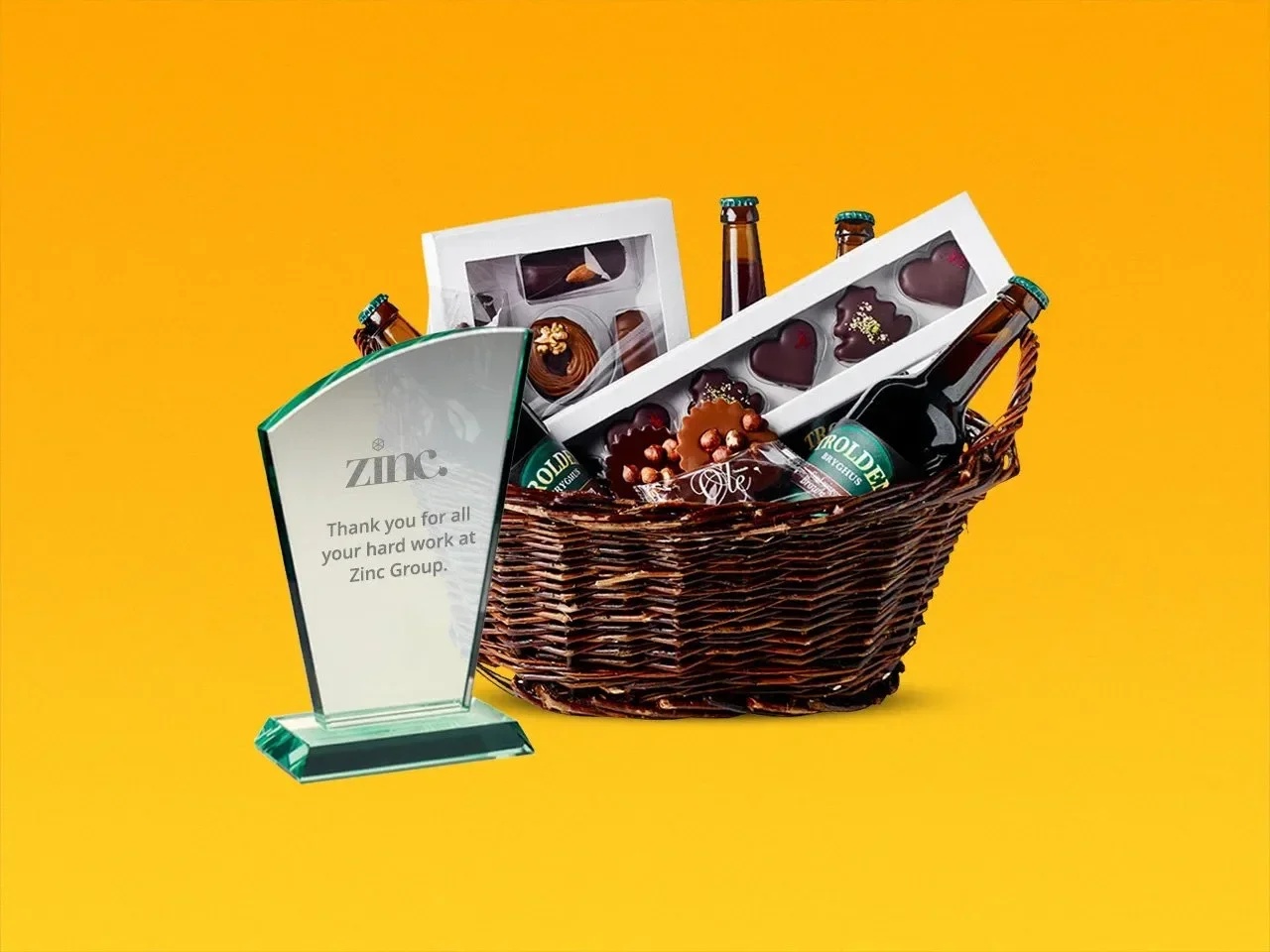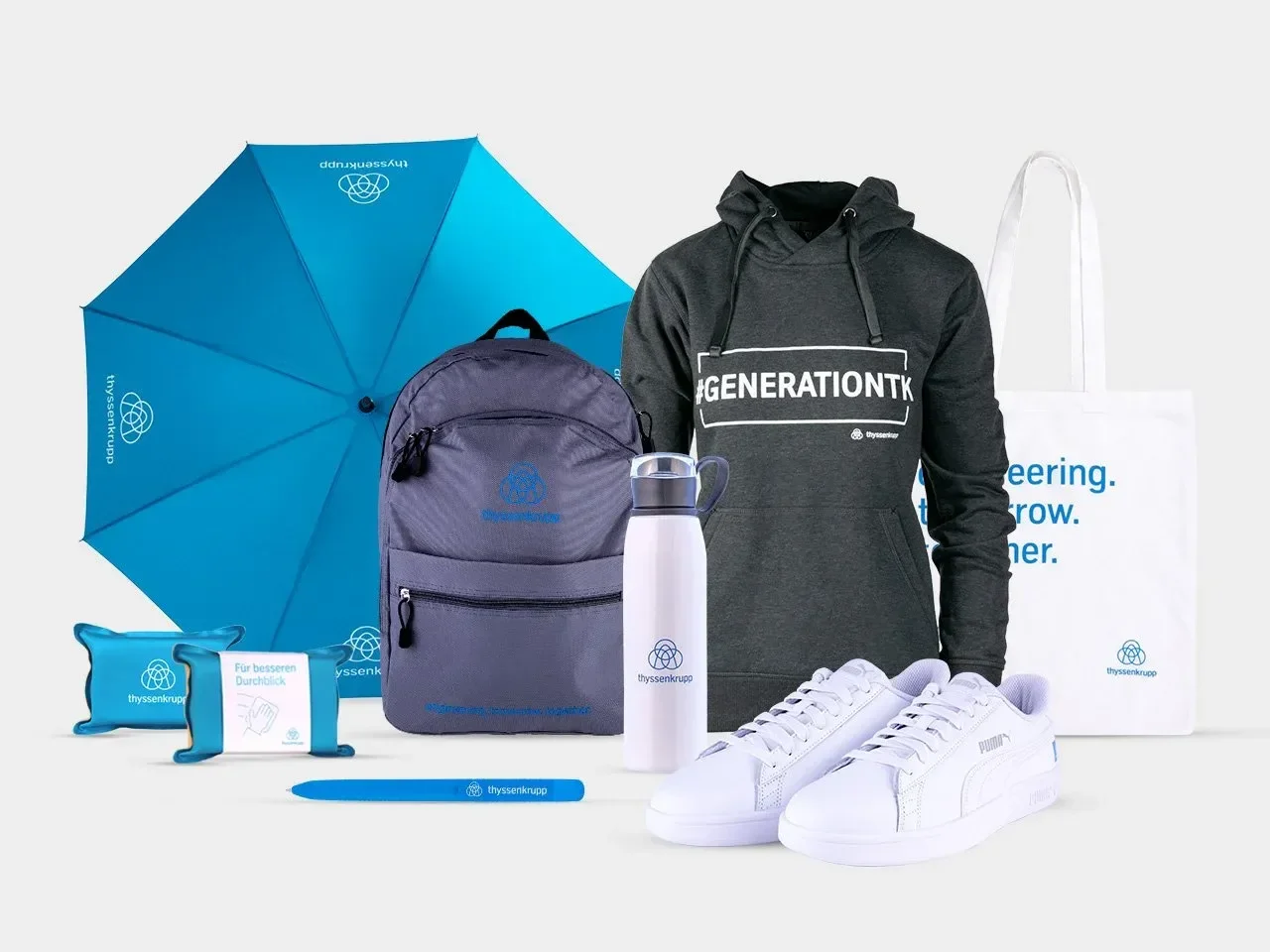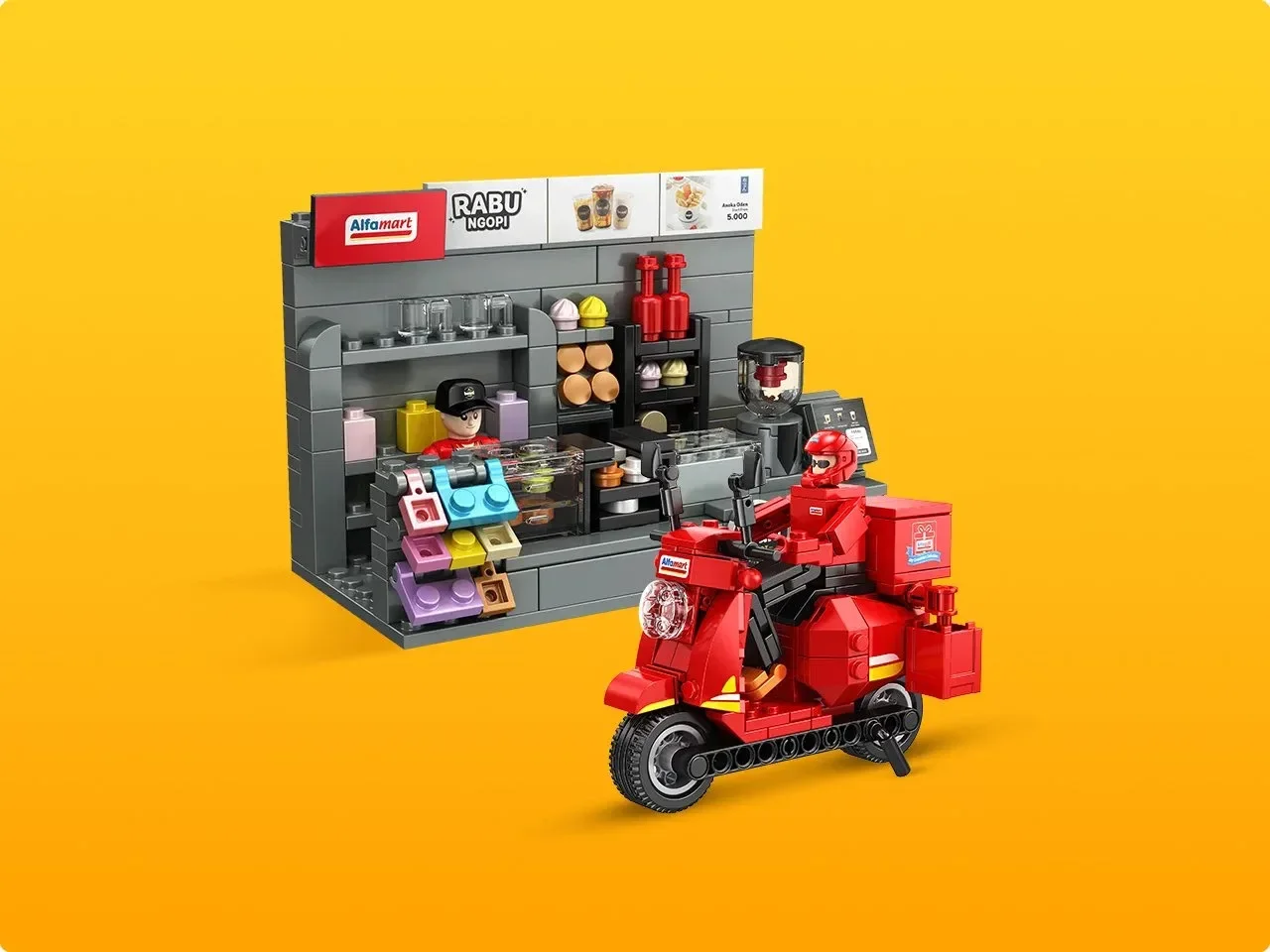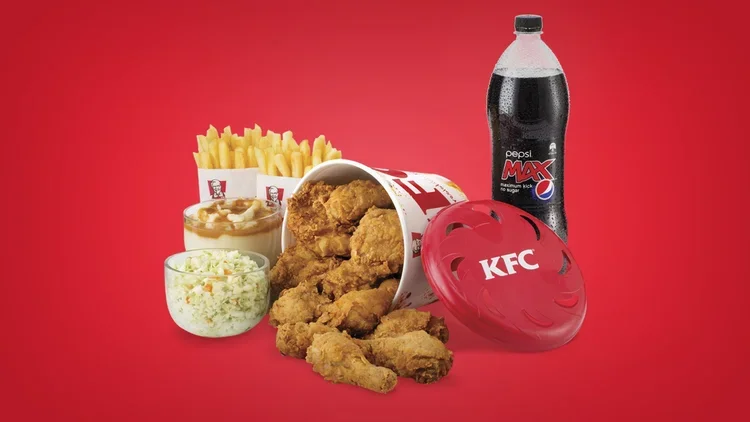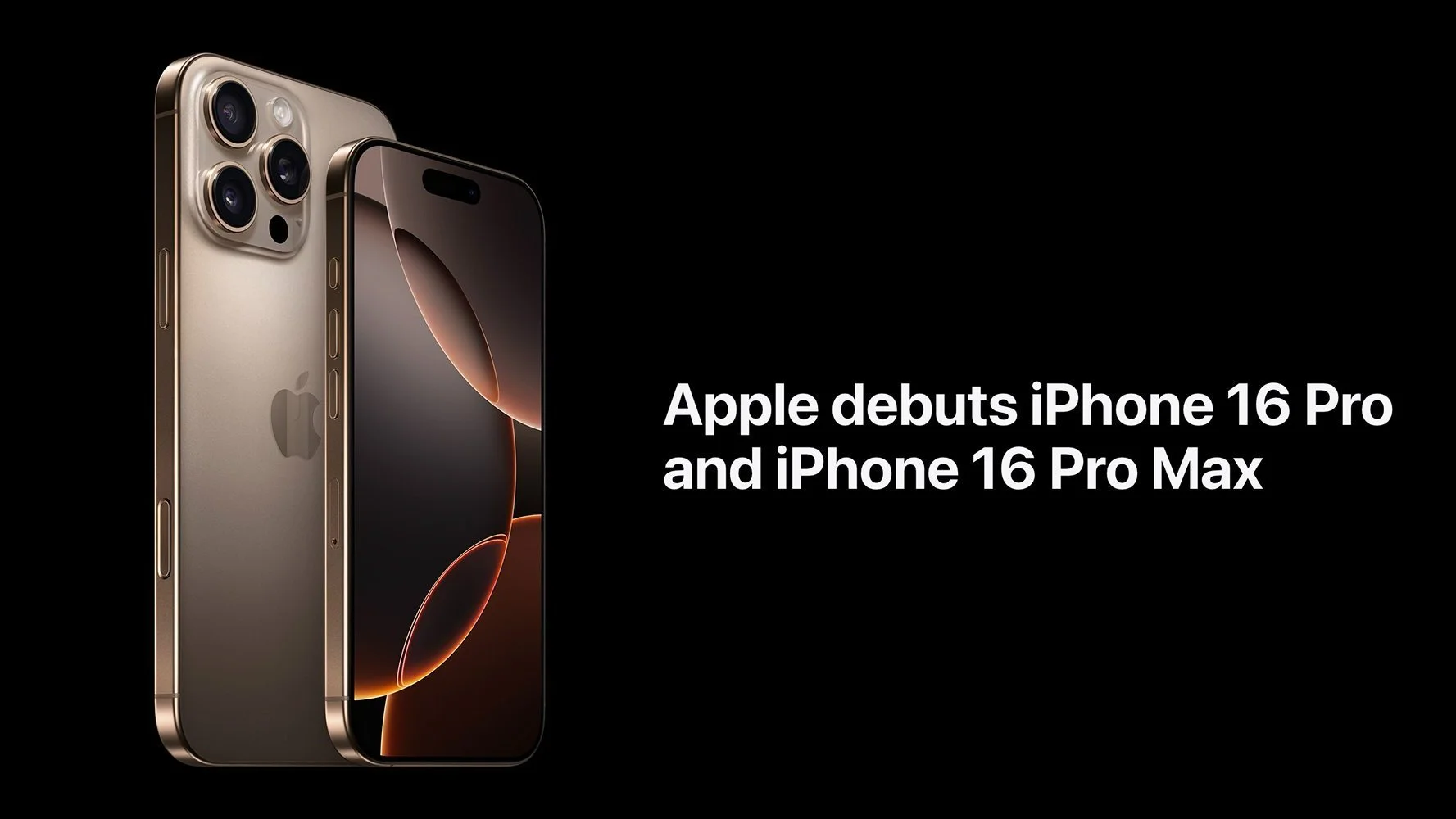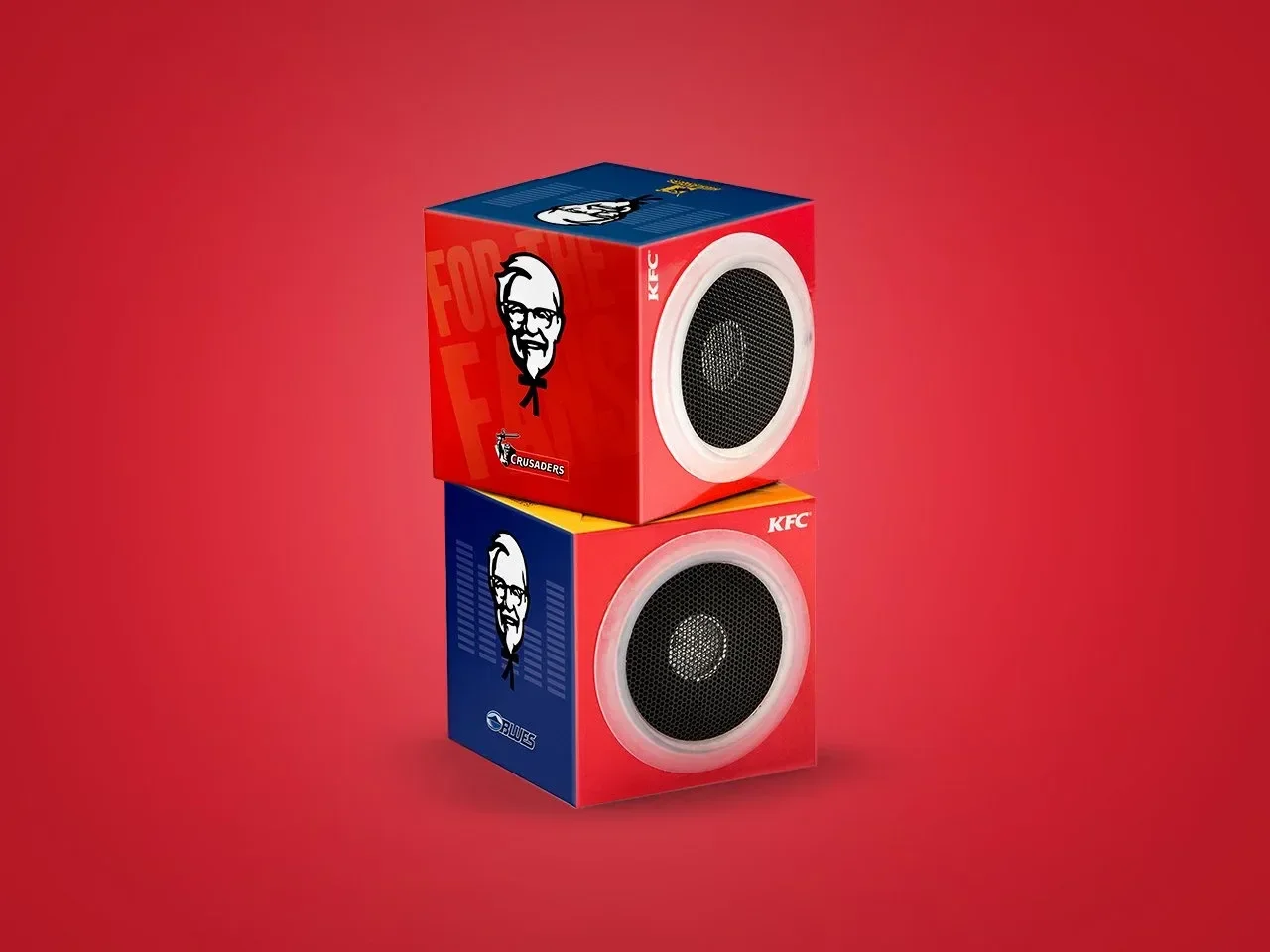Latest Trends
Explore the latest trends and insights in the dynamic world of marketing.
Great experiences come from understanding people.
We think its really important to keep a finger on the pulse, to know what’s trending and impacting differing markets and communities around the world. This helps us fuel our imagination and generate more awesome ideas and solutions for clients.
End-to-end Merchandise Programs vs. One-Off Promotional Orders: What’s Right for Your Business?
Merchandise programs are structured, ongoing campaigns designed to maintain a steady brand presence and long-term engagement. One-off promotional orders, on the other hand, provide flexibility to react quickly to short-term opportunities or seasonal needs.
Zinc Group
At a glance:
Merchandise programs offer a structured, end-to-end solution ideal for brands seeking consistent impact at scale.
One-off promotional orders offer speed and flexibility for campaigns that need to move fast.
The best approach depends on your goals, frequency, and resources; many brands combine both through a hybrid model.
Choosing between merchandise programs and one-off promotional orders requires a clear view of your business goals, budget, and long-term marketing strategy.
Merchandise programs are structured, ongoing campaigns designed to maintain a steady brand presence and long-term engagement. One-off promotional orders, on the other hand, provide flexibility to react quickly to short-term opportunities or seasonal needs.
This article outlines the key differences between the two approaches to help businesses choose the option that best supports their marketing and operational objectives.
What Is an End-To-End Merchandise Program?
An end-to-end merchandise program is a fully managed, strategically aligned system for delivering branded merchandise. It’s built to scale, safeguard your brand, and remove operational strain.
The process begins with understanding your brand, audience, and business objectives. Products are then designed and sourced to reflect your identity and resonate with your audience, using a trusted network of local and offshore suppliers. The program covers every detail: product development, approvals, inventory forecasting, storage, and quality assurance, so every item is brand-safe and campaign-ready.
Once products are in place, distribution is managed through integrated warehousing and fulfilment operations, supporting both local and global campaigns.
Beyond logistics, a merchandise program brings structure and governance to every program, with regular performance reviews, product refreshes, and campaign optimisation tied to measurable merchandise KPIs. This ensures the program stays relevant, efficient, and responsive to evolving business needs.
In short, an end-to-end merchandise program creates a purpose-built ecosystem that protects brand integrity, supports teams, and scales with business growth.
What Is One-off Promotional Merchandise Orders?
One-off promotional merchandise orders are short-term, standalone campaigns designed to meet immediate marketing objectives. They’re often chosen for launches, conferences, seasonal campaigns, or when speed is critical.
Unlike ongoing programs, they avoid long-term inventory management, governance, or campaign planning. Instead, products are sourced and delivered as a single project, enabling brands to act quickly with minimal lead time.
Typically, suppliers oversee the full execution, from concept development and design to production, logistics, and fulfilment, while clients retain visibility and brand oversight without the complexity of managing everything internally.
Depending on preference, distribution and impact, tracking may be handled internally by the client or supported by the supplier, ensuring the product journey—from idea to delivery—remains smooth, on-brand, and deadline-driven.
For businesses that need high-quality merchandise fast, without long-term commitments or infrastructure, one-off orders provide agility without compromise.
When Should You Choose an End-to-End Merchandise Program?
An end-to-end merchandise program is the right choice when you need clear, measurable outcomes. Merchandise partners such as Zinc can offer structured reporting, performance tracking, and campaign reviews that provide insight to understand what’s working, identify areas for improvement, and drive stronger ROI over time.
It’s also the right fit when you need seamless, brand-compliant distribution across regions or teams. Whether onboarding in Germany or activating in Asia, a managed program ensures consistent execution via defined logistics processes and quality frameworks.
And when internal resources are limited, this model takes the operational burden off your team. The provider manages sourcing, warehousing, stock planning, and fulfilment, so you stay focused on strategy while the day-to-day runs smoothly behind the scenes.
Is this model right for you? Here’s how it stacks up:
Pros
Saves time: The provider manages sourcing, logistics, and distribution from start to finish, allowing you and your team to focus on other tasks.
Professional execution: Built-in consistency, compliance, and quality into every stage of execution.
Cons
Higher initial investment: Merchandise programs require upfront investment in inventory, platform setup, and ongoing program governance, but often deliver stronger ROI through streamlined operations, greater control, and consistent brand experience at scale.
When Should You Choose One-Off Promotional Merchandise?
One-off promotional merchandise is ideal when you’re running a short-term initiative and have internal capacity to handle the rest. If your team already manages campaign planning, warehousing, and distribution, a one-off engagement can be a flexible option without requiring a long-term commitment.
This model also suits businesses that want full control over merchandise distribution. In this setup, the provider manages product development—from design to supplier coordination—before handing over finished goods. Your team retains control of how, when, and where they are distributed.
For proven ideas, businesses can look at proven promotional product examples or case studies to guide their merchandise selection.
Finally, one-off orders are a practical choice when budgets are lean. With no long-term inventory commitments or platform investment, you can deliver high-quality, on-brand merchandise scoped precisely to the brief, ensuring every dollar is strategically spent.
To help you weigh the approach, here are the pros and cons:
Pros
Lower upfront cost: No long-term inventory or platform commitments
Greater control: You manage how and where merchandise is distributed
Brief-specific execution: Merchandise is developed precisely to your current needs
Cons
More internal workload: Your team handles planning, distribution, and post-campaign tracking
End-to-end Merchandise Programs vs. One-Off Promotional Merchandise Orders
If you're still unsure which model is suitable for your business, here’s a quick side-by-side comparison of what you can expect from the two approaches.
The table below outlines the key differences across different aspects, from scope and support to control and cost.
| Aspect | Merchandise Programs | One-Off Promotional Orders |
|---|---|---|
| Support Level | Fully managed end-to-end by the provider, from campaign planning to distribution | Provider manages product creation; client oversees storage, distribution, and post-campaign activity |
| Distribution Model | Global, brand-compliant distribution handled by the provider | Distribution managed by the client |
| Control & Flexibility | Hands-off for internal teams; governance and compliance frameworks maintain consistency | Greater control over how, when, and where merchandise is deployed |
| Time & Resourcing Impact | Saves time and internal effort; the provider functions as an extension of your team | Requires internal resources to manage logistics, storage, and delivery |
| Data & Reporting | Includes structured program governance, performance insights, and reporting for continuous improvement | Limited reporting unless built into the project scope |
| Cost Profile | Higher initial investment, offset by long-term ROI, operational efficiency, and strategic value | Lower upfront cost; more cost-sensitive, brief-specific execution |
Based on these features, end-to-end merchandise programs are best suited for brands seeking scale, consistency, and operational efficiency across campaigns and locations. One-off promotional merchandise, on the other hand, works well for short-term initiatives where internal teams can manage fulfilment and tighter budgets are in play.
From Bold Ideas to Branded Results, Zinc Delivers
Whether your focus is on building a long-term merchandise program or executing a tactical one-off campaign, Zinc helps transform merchandise into a strategic brand asset, combining operational clarity, compliance, and measurable outcomes.
Our strength is in the details: creative concepts rooted in your brand identity, supplier networks vetted for quality and compliance, and logistics designed to deliver smoothly—from local activations to global rollouts.
You don’t have to choose one model exclusively. Many clients use a hybrid approach: running ongoing merchandise programs while activating one-off campaigns when opportunities arise. Zinc flexes around your needs, delivering consistency, control, and creative impact at every stage.
From brief to branded impact, your next merchandise solution starts here. Contact Zinc today to explore how we can support your goals.
FAQs
Can I switch from one-off orders to a merchandise program later?
Yes. Many brands begin with one-off orders to test creative ideas or respond to short-term needs, then scale into a merchandise program as ongoing requirements emerge.
How fast can Zinc turn around a one-off promotional order?
Turnaround time depends on product complexity, supplier lead times, and your campaign deadlines. Zinc streamlines the process by managing supplier coordination, compliance, and fulfilment, ensuring your merchandise is delivered on time and according to brief.
Is a merchandise program suitable for small teams or startups?
Absolutely. Smaller teams benefit greatly from an end-to-end merchandise program. Instead of building in-house logistics or procurement teams, you can rely on the merchandise partner to manage everything from sourcing to global fulfilment so that you can focus on more important tasks.
Can I run a one-off campaign alongside an existing merchandise program?
Yes. Zinc supports hybrid models where brands run a core merchandise program with added tactical activations as needed. This offers flexibility while maintaining consistency and operational efficiency.
What questions should I ask before deciding which model is right for my business?
Before choosing between a merchandise program and one-off orders, ask yourself:
● Do you have in-house resources for sourcing, storing, and shipping?
● Do you need merchandise distributed across multiple locations?
● Do you have the expertise to take care of the entire program?
These questions provide a quick self-check on whether you need a fully managed program or if a tactical, one-off order will be enough.
Key KPIs to Track in Merchandise Programs
Good logistics get the program out the door, but they don’t tell you if it worked. To assess real impact, you need clear performance signals. KPIs make that possible. They reveal whether the program drove engagement, strengthened brand visibility, supported conversion, or delivered value.
Zinc Group
At a glance:
Even the most well-executed merchandise rollout can miss the mark without clear performance tracking.
Key performance indicators (KPIs) like engagement, brand recall, lead generation, ROI, and budget efficiency reveal whether the merchandise is driving real outcomes.
Tracking these metrics turns anecdotal wins into measurable insights and gives you the clarity to refine, justify, and scale future campaigns with confidence.
A smooth rollout isn’t the same as success. Just because boxes go out and merchandise gets into people’s hands doesn’t mean the program actually made an impact.
Good logistics get the program out the door, but they don’t tell you if it worked. To assess real impact, you need clear performance signals. KPIs make that possible. They reveal whether the program drove engagement, strengthened brand visibility, supported conversion, or delivered value.
From usage rates and brand recall to lead conversions and cost efficiency, these are the KPIs that help evaluate, improve, and scale merchandise programs.
Campaign Engagement Metrics
Merchandise campaign engagement KPIs track audience interaction at the point of launch, capturing real-time signals of interest, participation, and amplification.
How to measure:
QR code scans: Use dynamic, campaign-specific QR codes to track how often and where people scan them. These can be printed directly on the merchandise (e.g. tote bags, tags, packaging) or included on inserts like cards or stickers. Analytics dashboards connected to each QR code provide scan volume by region, channel, and timeframe, revealing engagement peaks.
Social media shares and mentions (UGC): Monitor branded hashtags, tagged posts, or campaign mentions by tracking online conversions or analytics platforms. Encourage user-generated content (UGC) with campaign-specific calls to action (e.g. “Post a photo with your kit to win”) and measure success through post volume and reach.
Participation in activations: Track entries into competitions, redemptions, or survey completions triggered by the merchandise. Assess engagement depth by monitoring form completions, promo code redemptions, or other triggered actions.
Why it matters:
Merchandise aims to provoke interaction, and these metrics tell you whether the product led to measurable engagement: Did the QR code get scanned? Was the hoodie posted on Instagram? Did it lead to a sign-up, a share, or an action that connected the recipient back to your brand?
This data shows which elements of the creative—QR placement, messaging, packaging—sparked immediate interaction, and where the campaign gained traction geographically or demographically.
That insight allows brands to adjust mid-campaign, double down on high-performing regions or formats, and justify further spend with concrete interaction data, not assumptions.
Post-Campaign Merchandise Impact
This merchandise KPI goes beyond first impressions. It measures how recipients continue to use the merchandise, whether they wear it to work, carry it on errands, or display it at home.
It’s about practical, visible use that keeps your brand in circulation long after the campaign ends.
How to Measure It:
Reuse and wear rates: After the campaign, check how often the merchandise is worn or reused in real settings. For B2B programs, feedback from teams and spot checks usually reveal whether the item is still in use or has fallen out of use.
Lifestyle visibility: Track mentions in casual content, such as user photos on LinkedIn, Instagram stories, or Zoom calls featuring the merchandise. Use lightweight online monitoring, direct feedback loops, or campaign-specific hashtags to track this visibility.
Internal adoption: For staff merchandise, observe how the merchandise shows up across the organisation in onboarding packs, team shoutouts, and regular events. Are new hires wearing the cap? Do the bottles make it to desks? These everyday signals quietly reveal whether the gear has real cut-through.
Why It Matters:
Ongoing use is one of the clearest signs the merchandise resonated. When recipients keep using an item, they’re effectively putting your brand into rotation across offices, social feeds, and daily routines.
For internal programs, this kind of visibility often signals cultural traction. Teams adopt what resonates. Over time, these insights shape smarter product decisions, highlighting which items to refine, repeat, or retire in future kits.
Brand Recall and Recognition
Brand recall and recognition track how strongly recipients associate the merchandise with your brand visually, verbally, and emotionally during and after the campaign. It answers the question: When people see or use the merch, do they think of you?
How it’s measured:
Aided recall: Ask participants in post-campaign surveys whether they remember receiving branded merchandise and which brand it was associated with, when given a list of possible brands to choose from.
Unaided recall: Ask open-ended questions like “Which brand sent you merchandise recently?” to test spontaneous association.
Recognition tests: Present logos, colours, slogans, or campaign imagery to see what audiences remember and connect back to your brand. Methods include simple online quizzes or formal brand tracking studies.
Comparative tracking: Use baseline data from before the merchandise launch to measure changes in brand recognition post-campaign.
Why it matters:
Merchandise is an extension of a brand. Whether it’s the cut of a hoodie, the tone of the copy, or the finish on the packaging, every detail reinforces brand recognition, memorability, and alignment.
When people remember the product and the brand behind it, merchandise moves beyond novelty. It becomes a lasting brand asset. High recall leads to stronger brand affinity, increased repeat interactions, and greater campaign longevity. And in brand-saturated markets, that kind of lasting impression creates a real competitive edge.
Lead Generation or Conversions
Not all merchandise is aimed at brand visibility. Some pieces are intentionally designed to drive action. This KPI tracks how well a merchandise performs when tied to a specific call-to-action: sign-up, book a demo, scan to learn more, or redeem an offer. It’s especially relevant for B2B campaigns, product launches, trade shows, and digital lead funnels.
How to Measure:
Track conversion-linked CTAs: Use unique URLs, promo codes, or UTM links printed on the merchandise to attribute sign-ups or actions back to a specific item or campaign.
Form completions or demo bookings: Monitor how many recipients complete the desired action (e.g. register interest, attend a webinar, download gated content).
Lead quality metrics: Go beyond volume. Assess the sales-readiness of leads generated via the merchandise by applying CRM tagging or lead scoring tools.
Conversion rate: Calculate the percentage of merchandise recipients who completed the CTA, a core measure of how effectively merchandise drives the sales funnel.
Why it matters:
Merchandise isn’t always just about brand love. When executed with intent, it becomes a functional lever for commercial outcomes. Brands frequently integrate merchandise into broader lead generation ecosystems, as a conversation starter at trade shows, an incentive for digital campaigns, or a touchpoint in nurture journeys.
Tracking conversions helps close the loop between creativity and commercial impact. It shows that merchandise doesn’t just attract attention; it moves prospects forward. It also enables smarter decision-making: identifying which format, channel, or CTA delivered the strongest results, and guiding optimisation of future campaigns for higher conversion yield.
Budget Utilisation & Cost Efficiency
This KPI measures how effectively the team scopes, allocates, and spends the merchandise budget while minimising overspend, leakage, or hidden inefficiencies across the program lifecycle.
How to track it:
Forecasted vs. actual spend: Compare scoped budgets against actual spend post-campaign. Variances reveal oversights, unforeseen costs, or savings opportunities.
Cost per item analysis: Break down cost per unit across different fulfilment models, geographies, or tiers (e.g. VIP vs. standard kits). This identifies where cost efficiency is gained or lost at a granular level.
Variance reporting: Use variance reports to track deviations between initial proposals and final invoices and confirm whether actual spend matched the plan.
Hidden cost audits: Identifying indirect costs (e.g. expedited shipping, repacking, and inventory holding fees) that often go unnoticed without thorough post-campaign analysis can affect efficiency.
Why it matters:
Without clear tracking, merchandise budgets can suffer from scope creep, freight shocks, or post-campaign leakage. This KPI shows where the team captured value and where it lost value.
Businesses use this data to shape future pricing strategies, streamline logistics, and highlight unnecessary costs (like last-minute repacks or holding fees). It also helps clients justify procurement decisions by linking every dollar to clear, controlled outcomes, an essential step in enterprise or high-volume rollouts.
Return on Merchandise Investment (ROMI)
Merchandise program ROI measures how much value a merchandise program delivers compared to what it costs. It’s the clearest way to connect creative execution with commercial performance.
How it’s calculated:
ROMI = Total Attributed Value ÷ Total Program Cost
Attributed value includes everything the campaign delivered:
Revenue from increased sales
Qualified leads from QR codes or sign-up links
Conversions such as app downloads or event sign-ups
Internal savings from better onboarding, higher team engagement, or reduced churn
Program cost includes all spending across design, production, fulfilment, shipping, and distribution.
Most of the KPIs covered earlier feed into this calculation. Engagement signals, lead volume, reuse rates, and internal adoption all help estimate incremental revenue and savings.
Why it matters:
ROMI answers the most commercial question: “Was it worth it?” Whether the campaign goal was new leads, improved internal engagement, or reduced churn, this KPI puts a dollar value on the performance of merchandise.
It bridges creative output with financial return, giving CMOs and procurement leads the ammunition they need to defend spend. More importantly, it empowers clients to treat merchandise as a repeatable growth lever, not a one-off expense.
For brands serious about driving performance through merchandise, guesswork isn’t an option. Every campaign deserves to be designed with purpose and backed by data.
At Zinc, we work alongside brands to design and deliver merchandise programs that drive leads, reinforce brand visibility, or optimise spend. We align execution with real outcomes, not just outputs.
Reach out to us to start building a merchandise program engineered to drive results.
FAQs
Why is it important to track KPIs in a merchandise campaign?
Without KPIs, it’s difficult to know what worked and what didn’t. Tracking KPIs provides clear insights into performance, helping teams refine strategies, justify budget decisions, and scale successful elements in future campaigns.
What’s the difference between brand engagement and brand recall?
Brand engagement focuses on real-time interaction (e.g. scanning a QR code, posting online), while brand recall measures how well people remember your brand after receiving the merchandise. Both offer different but complementary insights.
When is the best time to define KPIs in a merchandise campaign?
At the beginning. Defining KPIs before launch ensures the program is built around measurable goals, not just creative ideas. It also helps align teams, vendors, and stakeholders on what success looks like.
Why Procurement Teams Are Moving Toward Outsourcing For Merchandise Fulfilment
Managing merchandise fulfilment in-house can become increasingly complex as operations scale. Coordinating logistics, inventory control, compliance, and distribution demands specialised expertise and infrastructure, resources that many procurement teams cannot maintain cost-effectively in-house.
Zinc Group
At a glance:
Outsourcing fulfilment allows businesses to scale operations seamlessly while managing costs effectively.
Fulfilment providers leverage advanced technology and streamlined platforms to optimise logistics and inventory management for businesses.
This approach ensures brand consistency across all products while handling compliance and operational challenges.
Data insights from fulfilment platforms help procurement teams make smarter decisions while supporting sustainability and ethical sourcing.
Managing merchandise fulfilment in-house can become increasingly complex as operations scale. Coordinating logistics, inventory control, compliance, and distribution demands specialised expertise and infrastructure, resources that many procurement teams cannot maintain cost-effectively in-house.
Outsourcing fulfilment to experienced third parties is becoming a preferred strategy. It allows procurement teams to scale operations efficiently, maintain brand consistency, and access advanced technology, without the overhead of running an in-house logistics operation.
In this article, we explore the key benefits of outsourcing merchandise fulfilment, from ensuring brand control to leveraging data-driven insights, and why more procurement teams are making the shift.
Guaranteed Brand Consistency Across Every Touchpoint
Fulfilment partners play a vital role in ensuring brand consistency when merchandise fulfilment is outsourced, following strict brand guidelines, covering logo usage, packaging colours, product presentation, and unboxing experience.
This involves training warehouse teams, using visual guides and checklists, and applying documented quality standards across every order. Maintaining a consistent brand experience helps reinforce brand recognition and create memorable promotional products.
Branded packaging is another essential element, with custom boxes, mailers, tape, and labels carrying the brand identity. Some fulfilment partners offer white-label shipping so only the client’s branding appears on labels and packing slips. The unboxing process can also be tailored with branded tissue, thank-you notes, and custom seals to create a consistent and premium feel.
To protect brand integrity, partners implement multi-step quality control processes, verifying correct items, sizes, and colours before shipping. Technology such as Warehouse Management Systems (WMS) tracks inventory and enforces packing rules, while automation and barcode scanning reduce errors and improve efficiency.
Together, these measures help maintain brand consistency even as order volumes grow and operations expand globally.
Access to Advanced Technology and Fulfilment Platforms
When procurement teams partner with the right fulfilment partners, they gain access to platforms that streamline logistics, inventory, and order management.
For example, platforms like Zinc can integrate seamlessly with existing systems, such as SAP, Oracle, and ARIBA, through API connections, giving procurement teams full control over their inventory, orders, and logistics, all without the need for complex system overhauls or heavy internal development.
Features like real-time tracking, automated order processing, and optimised shipping help operations run smoothly while providing the transparency procurement teams need. This data-driven approach improves efficiency, supports better decision-making, and enhances service quality.
Localisation capabilities, from tailoring product ranges to supporting multiple languages and currencies, ensure brand consistency is maintained across every market.
Enable Scalable Growth
As businesses scale, managing supply chains efficiently becomes a key driver of sustainable growth. Relying solely on in-house logistics often creates higher costs, operational bottlenecks, and the need for specialised expertise. This is where fulfilment partners provide real value, enabling businesses to grow without taking on the complexity or extra costs of managing logistics internally.
A strong global warehouse network and established logistics infrastructure of fulfilment providers give businesses the flexibility to adapt to seasonal fluctuations, sudden order surges, or entry into new markets. They can tailor solutions to meet these demands without disrupting operations.
By leveraging partner infrastructure, companies can optimise supply chains, reduce transportation costs, and maintain on-time deliveries, all while avoiding the resource drain of running large-scale fulfilment in-house.
Expert Risk Management and Compliance Handling
As businesses scale, procurement teams are increasingly outsourcing fulfilment to manage growth while keeping operations efficient and cost-effective. One major driver of this shift is fulfilment partners’ ability to manage risks and compliance challenges that can overwhelm in-house teams.
Advanced systems provide real-time inventory tracking to prevent stockouts and overstocking, while quality checks, protective packaging, and secure handling reduce the risk of product loss. Robust security protocols, from surveillance and cybersecurity measures to insurance coverage, protect goods at every stage of the supply chain.
Partners also manage import/export regulations, customs laws, and industry standards, handling all required documentation such as customs declarations and certificates of origin. Many also prioritise waste management and uphold local labour laws, helping businesses remain compliant and avoid costly fines or delays.
For international operations, fulfilment partners oversee tariffs, taxes, and certifications, and prepare for potential disruptions with contingency plans, backup facilities, and optimised rerouting strategies.
By delegating these responsibilities, procurement teams can maintain smooth operations, minimise risk, and focus on strategic growth initiatives.
Aligning With ESG and Sustainability Goals
With global attention on sustainability, procurement teams must ensure their fulfilment strategies align with environmental, social, and governance (ESG) objectives.
At Zinc, sustainability is embedded in every step of its fulfilment process, from eco-friendly packaging and carbon-neutral shipping to ethical sourcing. The company works with suppliers who meet strict environmental and social responsibility standards, ensuring products align with global sustainability targets.
Practices extend beyond eco-friendly products to include compliance with UN Sustainable Development Goals (SDGs) and industry regulations. Regular supply chain audits help verify that fulfilment processes meet corporate social responsibility (CSR) commitments.
However, not all fulfilment providers prioritise sustainability. Procurement teams must thoroughly vet partners to ensure sustainability practices are fully integrated at every stage of operations. Choosing a partner like Zinc helps ensure fulfilment processes support sustainability goals while enabling business growth.
Cost Reduction and Operational Efficiency
Outsourcing fulfilment is an effective way to achieve cost savings, especially in logistics. Fulfilment partners leverage high shipping volumes to secure preferential carrier rates and offer more flexibility with shipping options, reducing costs across the board. Additionally, with access to multiple warehouse locations, they can minimise shipping costs and, in some cases, provide free shipping.
The advantages go beyond shipping rates. Outsourcing fulfilment eliminates the need for heavy investments in logistics teams, costly infrastructure like warehouses or purchasing and maintaining complex technology and software systems. By partnering with a trusted fulfilment provider, these savings can translate into substantial cost reductions while maintaining service quality.
In conclusion, outsourcing merchandise fulfilment to a trusted partner delivers substantial benefits, including cost efficiency, specialised expertise, and the flexibility to scale. Selecting the right partner is a strategic decision that directly impacts operational performance and brand consistency.
Procurement teams that conduct thorough due diligence and select a partner with proven global capabilities, advanced technology, and strong compliance standards, such as Zinc, can transform logistics into a competitive advantage.
Ready to optimise your merchandise fulfilment? Contact Zinc to discuss how a tailored, scalable solution can support your business goals today and in the future.
FAQs
What is merchandise fulfilment, and why is it important for procurement teams?
Merchandise fulfilment involves storing, packing, and shipping promotional or branded products. It ensures timely delivery, inventory management, and consistency across branded products, which is crucial for procurement teams to maintain quality control and meet customer expectations.
What kind of technology do fulfilment providers use to optimise operations?
Fulfilment providers use real-time inventory tracking, automated order management, advanced shipping platforms, and data analytics to optimise logistics, reduce errors, and improve overall supply chain efficiency.
Can outsourcing fulfilment help with sustainability and ethical sourcing goals?
Yes, but only with the right partner. Not all fulfilment partners prioritise sustainability, but those that do, like Zinc, offer eco-friendly packaging, ethical sourcing practices, and carbon-neutral shipping, helping businesses meet their ESG goals while improving operational efficiency.
How Merchandise Programs Drive ROI for Businesses
Merchandise programs are how brands live, work, and travel in the real world. Unlike one-off giveaways, these programs establish a sustained brand presence and genuine connections that last well beyond fleeting campaigns.
Zinc Group
At a glance:
Merchandise programs help brands maintain long-term visibility without the need for constant digital advertising.
They strengthen customer loyalty, enhance employee engagement, and create meaningful, real-world brand presence.
Selecting the right products, distributing them at the right time, and adding personal touches are key to driving stronger program performance.
ROI can be measured by tracking longevity, brand recall, cost per impression, and loyalty indicators.
Merchandise programs are how brands live, work, and travel in the real world.
Unlike one-off giveaways, these programs establish a sustained brand presence and genuine connections that last well beyond fleeting campaigns. They support customer engagement, enrich employee experience, and give brands a tangible place in everyday life.
Programs can include employee onboarding packs, client gift calendars, trade show merchandise, and loyalty rewards. When done well, they offer steady brand exposure without the need for ongoing advertising spend.
As businesses consider where to direct their marketing investment, it’s helpful to understand how merchandise programs compare to digital advertising. Merchandise creates lasting, real-world touchpoints that digital campaigns alone cannot fully replace.
Now that we understand what merchandise programs offer, the next step is to comprehend how they create measurable value for your business.
How Merchandise Programs Generate ROI
Merchandise programs deliver measurable returns beyond the initial investment. Here are some of the ways they generate ROI.
Long-Term Brand Visibility
Branded items such as notebooks, apparel, drink bottles, and tech organisers remain in use for months or even years. This ongoing presence keeps your brand visible in offices, client meetings, and daily routines long after the first handover.
For example, Siemens AG partnered with Zinc to deliver a global merchandise program that ensured brand consistency across multiple markets and aligned with the company’s ESG goals. This shows how a well-managed merchandise program can reinforce brand identity worldwide while supporting sustainability commitments.
Physical merchandise becomes part of everyday spaces, providing consistent brand visibility without ongoing spending.
Customer Loyalty and Engagement
Merchandise programs help brands stay connected with their customers over time. Loyalty rewards, milestone gifts, and seasonal merchandise drops demonstrate to customers that they are valued.
Zinc’s collaboration with Sonepar focused on upcycling old inventory into new, sustainable apparel, reducing waste and avoiding landfill. This creative approach not only supported Sonepar’s sustainability goals but also demonstrated value to environmentally conscious customers.
These regular, thoughtful touchpoints help build emotional connections and encourage long-term brand preference.
Employee Engagement and Retention
Branded merchandise has become part of how great companies make employees feel welcome. Items shared during onboarding or at key recognition moments aren’t just gifts; they help employees tangibly connect with the business. When employees receive these items at the right time, they carry meaning that strengthens their connection with the company.
KFC partnered with Zinc to create summer activations featuring eco-friendly products like portable speakers and flying discs. These seasonal activities helped bring employees together and reinforced positive team engagement through memorable, sustainable experiences.
Teams notice when they’re thoughtfully supported, and this often translates to stronger commitment and a deeper sense of belonging.
Why Merchandise Programs Are a Smart Long-Term Investment
Merchandise programs create ongoing brand exposure without requiring continuous advertising spend.
Unlike digital campaigns that cease once the media spend is exhausted, merchandise continues to work quietly in the background for months or even years.
A branded drink bottle, notebook, or tech organiser can keep your brand visible in daily life well beyond the initial campaign.
Merchandise programs do more than cover marketing needs. When designed well, these items become lasting tools that quietly reinforce your brand’s presence day after day.
To maximise this long-term potential, it’s essential to regularly review the performance of the merchandise and determine whether it continues to deliver the desired value.
These benefits are only as strong as your ability to track and measure them.
How to Measure the ROI of Merchandise Programs
Measuring the success of your merchandise program is not just about the number of products distributed. The real value comes from whether these products continue to serve their purpose and remain visible in the recipient’s environment.
Cost Per Impression: Evaluating Long-Term Value
Cost per impression (CPI) helps you understand how efficiently your merchandise generates brand exposure. To calculate CPI, estimate how often a branded item is seen or used throughout its lifespan and compare this to your investment.
For example, a tech organiser that stays on a client’s desk for a year creates ongoing brand exposure and a low CPI compared to short-term digital ads. Tracking the CPI gives you a clear view of whether merchandise offers better long-term value compared to other channels.
Longevity and Usage: Measuring Active Brand Presence
The lifespan of your branded items plays a crucial role in overall ROI.
It’s essential to consider whether those items remain in use and continue to deliver brand visibility over time. Useful, well-made products such as drink bottles, quality notebooks, or desk organisers tend to stay in circulation for longer than you think.
To measure longevity, conduct regular follow-ups, administer usage surveys, or engage in direct conversations with clients or employees to identify which items they use most actively.
Brand Recall: Assessing Brand Awareness Impact
Brand recall is a key indicator of merchandise program effectiveness. You want recipients to think of your brand naturally when using the item, even without extra reminders.
You can assess this by asking whether the brand easily comes to mind when using the merchandise. Strong brand recall indicates that your merchandise is doing more than just sitting on a desk; it is actively enhancing awareness and familiarity.
Customer and Employee Feedback: Capturing Real-World Impact
Feedback from customers and employees offers valuable insight into whether the merchandise is making a positive impression. It helps answer important questions, such as: Is the item useful? Does it feel high quality? Does it make the recipient feel valued?
Collecting feedback regularly through surveys, interviews, or check-ins will help you fine-tune your merchandise selection and delivery timing. Positive feedback indicates that your program fosters brand goodwill, while negative feedback highlights areas for improvement.
Loyalty Metrics: Tracking Behavioural Shifts
Merchandise programs can influence loyalty in meaningful ways.
In B2B settings, this often manifests as increased repeat business, higher referral rates, and stronger employee retention.
You can track this by monitoring:
Repeat purchase rates from customers who received branded merchandise
Employee tenure or satisfaction linked to onboarding or recognition programs that included merchandise products
Customer referrals from those engaged in merchandise-driven loyalty efforts
These behavioural shifts help build a complete picture of merchandise ROI and highlight the long-term value of sustained brand touchpoints.
Consistently tracking these indicators will help you refine your merchandise strategy and ensure you are not just distributing products but creating brand experiences that last.
To sum up, merchandise programs are more than branded products. They are where your brand lives, works and builds real connections. Done well, they create loyalty, inspire teams, and keep your brand visible long after the first touchpoint.
At Zinc Productions, we bring brands to life. We design, manage, and deliver merchandise programs that drive measurable ROI and create lasting impact.
Contact us today to develop a merchandise strategy that works in the real world and delivers tangible ROI for your business.



